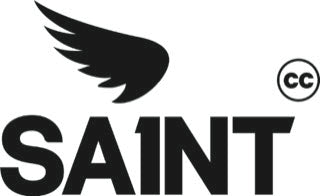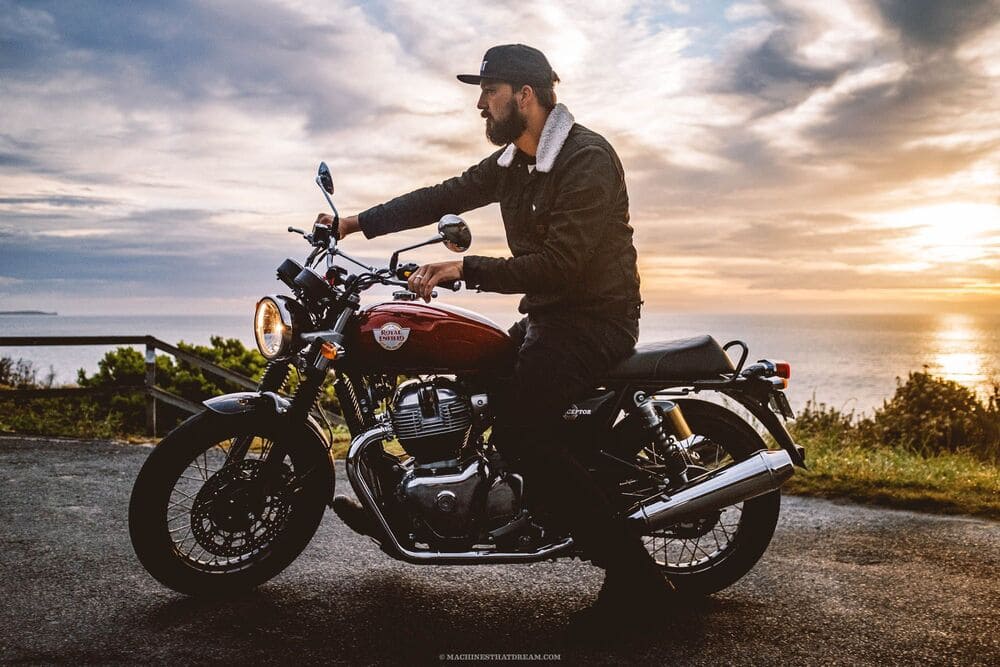
HOW TO BUY A MOTORCYCLE FROM A PRIVATE SELLER: YOUR ULTIMATE GUIDE
Tons of people buy used motorcycles from private sellers. It's way cheaper than going to a dealership, and if you're a savvy enough buyer you can score a great deal that will save you hundreds.
On the other hand, there's a sucker born every day. It's important to do your research before you dive into the market, or you could get stuck with a total piece of crap and the embarrassing feeling that you just got ripped off.
We've put this handy guide together so you know exactly what to look for and what to avoid. Every rider will have their own individual buying goals, so arm yourself with plenty of knowledge and you'll be set to land the bike of your dreams.

KNOW YOUR NEEDS AND YOUR SKILLS
Establishing why you're getting a bike and what you'll be using it for is a good place to start. Is it for casual riding, or will you be using it almost every day? Are you looking to fix something up, flip it for a profit, or is it your very first motorcycle?
Be realistic about your skill level. If the bike needs work, you should be very confident that you can actually fix those issues yourself. So many people make the mistake of thinking they can tinker out some small issues, only to find themselves completely overwhelmed.
Think about your riding style and habits. If you're mainly a weekend rider, you can afford to be slightly more flexible on a motorcycle's mileage (within reason). However, if you plan on commuting to work every day, you might be better off with something that will last a bit longer.
RESEARCH WHERE TO BUY A USED MOTORCYCLE
When shopping online it's always best to search multiple platforms to compare prices and offers, and motorcycles are no exception. Scour the internet, paper ads, or even any 'for sale' signs you happen to spot on the side of the road.
It's more than likely you will end up finding something online though. The best places to look are Bikesales, Gumtree, Facebook marketplace, or Justbikes. Make a decision on the ideal model you'd like to buy then compare prices and availability. You might be surprised by just how much is out there.
KNOW THE VALUE OF THE MOTORCYCLE
Finding out the true value of a particular model is the best way to determine its fair selling price. You can do this by comparing the same bike or similar used bikes over multiple selling platforms. Most of the time you'll get a fairly quick idea of what's a ripoff and what's a good price.
There are plenty of good evaluation websites that factor in a bike's make, model, and year to estimate its current market value. Use these as a general guide, but keep in mind they can sometimes miss important factors like customisation and rarity, so while they're good tools these sites aren't 100% perfect.
Motorcycle forums are also a great place for general advice and tips from experienced riders.
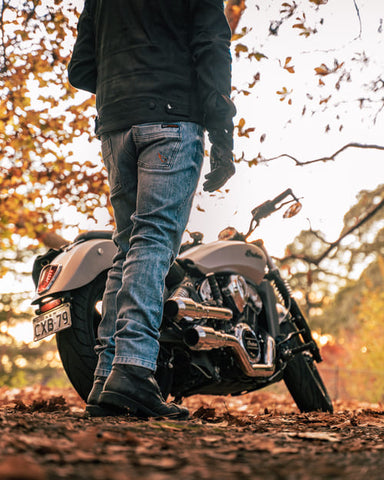
IMPORTANT QUESTIONS TO ASK A MOTORCYCLE PRIVATE SELLER
Ask any seller these questions before committing to a purchase. These will not only tell you the motorcycle's history but how trustworthy the seller is.
-
HOW LONG THEY'VE HAD THE MOTORCYCLE
While there's no specific time you should be looking for, this will tell you how familiar they are with the bike. You can also ask how often they actually rode it, and by comparing this to the bike's mileage you should get a pretty good idea of how it was used.
-
THE LAST TIME THE MOTORCYCLE WAS REGISTERED
If a motorcycle hasn't been registered in a long time, this could be a red flag for possible paperwork issues. This question will also tell you how often the bike has been used in recent times.
-
ANY PROBLEMS WITH THE MOTORCYCLE
The truth is that a used bike is likely to have one or two problems. You might get lucky and find a perfectly healthy motorcycle, but it is second-hand after all. See how upfront the previous owner is about any potential issues, and how likely these are to give you any major headaches.
-
THE REASON FOR SELLING THE MOTORCYCLE
Again, this will be a good indication of the bike's condition and history. Do they just not ride as much, are they looking to upgrade, or is it likely they're just pawning off an old piece of junk?
-
WHETHER OR NOT THEY HAVE THE TITLE TO THE MOTORCYCLE
As a rule, don't buy a used motorcycle if the owner doesn't have the bike's title. While you can actually get a new title, the paperwork is a major pain and you run the risk of buying a stolen motorcycle or one that still has an outstanding lien payment.
-
WHERE WAS THE BIKE STORED?
Did the previous owner keep their bike in a garage or out on the street? Motorcycles accumulate wear and tear from the elements if they stay outside for long periods of time.
It's certainly not a dealbreaker. Heaps of people leave their bikes outside, and you might plan to do the same. But it's still a handy piece of knowledge when considering the bike's condition.
-
HOW YOU'RE GOING TO PAY
When it comes time to pay the seller, remember the golden rule: cash is king. Try to pay with hard cash because it makes for a smooth, uncomplicated transaction.
If you plan on paying for a private sale with a loan that's perfectly fine but involves a few extra steps. Once you get the loan approved by your bank, you'll need to meet with the seller at your bank of choice to complete the arrangement.
The added benefit of using a loan is that your bank will do a very thorough job of making sure everything is up to scratch. This includes a VIN check (vehicle identification number), so they'll pick up on anything dodgy. It's their investment after all.
Of course, there's always the chance a seller will prefer to do business with someone who simply has the cash on hand, so make sure they're okay with going through the loan process.
-
TRANSPORTING THE VEHICLE
So you're keen on a motorcycle, but how exactly do you plan on getting it home? If your plan is to drive it home, make sure you have a valid driver's license. Just because you own a bike, doesn't mean you can drive without one.
Do you have a mate with a licence who's willing to give you a hand? If you drove your car to the meetup, this is a handy workaround. Another option is getting a trailer, which should probably be your last resort because of the extra work involved.
Can the seller drive the bike to your place? With a bit of cash incentive, they might be up to it.
Keep in mind that in any case, once you buy the motorcycle it's now legally in your name. That means any accidents will be your responsibility, so call up your insurance company of choice and get your new baby insured before you even think about pulling out of the driveway.
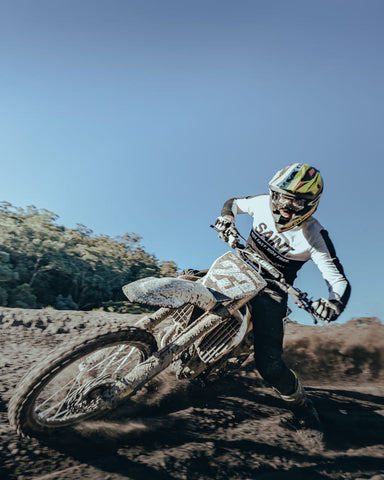
WHAT TO LOOK FOR: THE USED MOTORCYCLE CHECKLIST
Before buying any motorcycle, make sure to give it a good top-to-bottom inspection. Take your time, because small issues might not be apparent straight away. If you can, bring a flashlight to help see any tight spots.
If you're relatively new to the motorcycle world and you've got a biker friend, definitely try to bring them along for this part. There's not much point in looking the bike over if you have no idea what you're actually meant to be looking at.
Here are the main things to look out for:
-
ENGINE
For the initial inspection, you'll want the bike cold. Call ahead and tell the previous owner not to start it beforehand to avoid a hot engine. This will let you know if the motorcycle has any start-up issues.
First, sit on the bike while it's in neutral and roll it backward and forwards. A healthy bike should roll quite easily. Now go down into first gear and try rolling it again. If it still rolls without pulling the clutch handle, then the bike has a clutch or transmission problem.
While testing how the bike rolls, check out the motorcycle tires as well. They should be rolling straight with no wobble.
Next, see if the motorcycle starts smoothly. Does it rev easily and tick over with no issues? Keep your ears open for any jarring noises the bike makes, and if any smoke comes out.
-
FRAME
The frame is a motorcycle's core structure that supports the engine, suspension, and the rider themselves. The frame tubes should be straight. Any dents, bangs, or paint ripples could indicate a previous accident. Turn the handlebars and make sure they turn lock to lock. Lastly, pop the seat and inspect the sub-frame.
-
SUSPENSION
When you take it for a test ride make sure to check out the bike's suspension. It shouldn't be wobbling while you ride, and the front tire should align at 90 degrees with the handlebars.
Another way of testing the suspension is to sit on the bike and pull in the front brakes while leaning down. If you feel a bit of give in the forks, that means the suspension is working without issue.
-
FLUID LEAKS
A leaking bike is a bad news, so check the ground underneath the motorcycle for wet spots. Ask the owner where they usually store it and make sure to check that spot as well. If you spot signs of leaking that could mean a lot of extra work for you down the track.
-
CHAIN AND SPROCKET
At some point in a motorcycle's life, the chain will need to be replaced, possibly multiple times. Regardless, you should inspect the chain on a motorcycle you plan on buying because replacing a worn chain is another expense that you could be accumulating.
You can check a chain by gently pushing it along its sections. It should move relatively freely without feeling like you're forcing it, and there should be no rust. Check the sprocket teeth on the chain as well to see if they've been worn down.
-
TIRES
Tires aren't cheap to replace, so make sure they're in good shape or it might cost you down the line. Check out their general condition and look out for any bald spots or cracks. They should have even wear and still have 1.5mm of tread remaining. When you take a test ride the tires should roll straight without any wobble.
-
HAS THE BIKE BEEN TIPPED OVER?
Look over the bike's body for any signs of damage, which could be a sign of a crash or that the bike has been tipped over. Check for scratches or dents on the side panels and the tank. Also check the foot pegs, engine fins, handlebars, and any general signs of major damage.
-
BRAKE LEVERS
Test the brakes and make sure they're completely functional. You can do this by sitting on the bike and pulling the brake lever. They should engage as soon as you pull the lever. They should respond fairly quickly. If you need to pull them far to get a response, the bike could have brake issues.
Have a look at the brake pads as well. Check their thickness and ask if they've been replaced recently.
-
BATTERY
While the best way to test a motorcycle's battery is with a battery tester, a visual check will tell you the most obvious signs of damage. We don't all have battery testers lying around after all.
When checking the battery, the major things to look out for are broken terminals, cracks or bulges in the plastic casing as well as leaking fluid or discolouration.
However, you should know that battery terminals can naturally get corrosion over time. In most cases you can simply clean the battery and keep using it, so keep this in mind before you decide that a battery has gone bad.
-
BRAKE FLUID
Check the colour and level of the brake fluid. It should be a pale yellow colour. If it's dark brown or back, that's not a good sign.
-
FUEL TANK
This is where a torch/flashlight comes in handy. Check the tank opening for any rust or debris, and make sure the inside is clear. The fuel tank needs to be checked very carefully. Anything inside it can make its way through the bike and stuff your carburetor, which controls the air and fuel entering the engine.
-
LIGHTS
You're most likely going to buy a motorcycle during the day, so don't forget to test the headlights! It would be a nasty surprise to set out for a nighttime ride only to find that your headlights are busted.
TAKE IT FOR A TEST RIDE

Take that baby for a ride before you even think about forking over any cash. Looking the bike over is all well and good, but there's no substitute for jumping on and seeing how it actually rides.
On a test ride, you can see how smoothly the bike actually operates and handles. It's a chance to see the brakes and gears in action and test how reliable they actually work. Take it around the block a few times until you're completely satisfied.
If you're a new rider, some sellers might be uneasy about letting you on their bike. If that's the case, bringing an experienced biker friend might help smooth things over. The extra benefit of this is your friend might have a better handle on how well the bike runs than you would.
Some sellers might be completely against the idea of a test ride, which is never a good sign. You might need to offer some collateral like a driver's licence to put them at ease, but it's up to you how trustworthy they seem.
If they won't let you ride the bike under any circumstances, no matter what you offer, take it as a sign to walk away. There's no good reason you shouldn't be able to test the bike, and if they won't let you on it then they most likely have something to hide.
PAPERWORK WHEN BUYING A MOTORCYCLE FROM A PRIVATE SELLER
Paperwork is something that can't be avoided when buying a bike, used or new.
As mentioned above you will need the motorcycle's title. The process of a title transfer will depend on where you live, but it usually involves both seller and buyer signing the transfer form, a roadworthy certificate, and a transfer fee.
If a seller tells you they don't have the title on them and promise to send it later, don't take their word for it. If a seller couldn't get organised enough to get the title on the day, you run the risk of getting burnt when they don't deliver.
Try to get a copy of the bike's maintenance history as well. This will help you asses when the bike will need its next service and any issues that might pop up in the future.
Ask for a written receipt for extra security. The templates for motorcycle receipts can easily be found online, so make sure to print one out and bring it along. Don't rely on the seller to remember.
You can also run a check on the bike's chassis and engine number to make sure there's nothing fishy going on. You should also ask to see the seller's driver's licence.
DON'T RUSH BUYING A USED MOTORCYCLE
It's easy to get carried away in the excitement of buying a motorcycle, but some things aren't meant to be rushed. Motorcycles are awesome but they're extremely powerful machines that need to be respected. Safety is always a priority.
Take the time to properly research which model is best for your specific needs. Think about what kind of riding you'll be doing and how often you're likely to get on the bike. You might see a great deal on a used motorcycle, but if it's not the right match then you might end up with buyer's remorse.
When meeting a seller, it's tempting to buy their bike simply because you've taken the time to organise a meetup and don't want to go through the process again. But if the bike is raising a lot of red flags, know when to walk away.
Putting in the time and research is worth the extra effort when choosing a used motorcycle. It's the best way to ensure that you grab yourself a good deal and end up with the right bike.
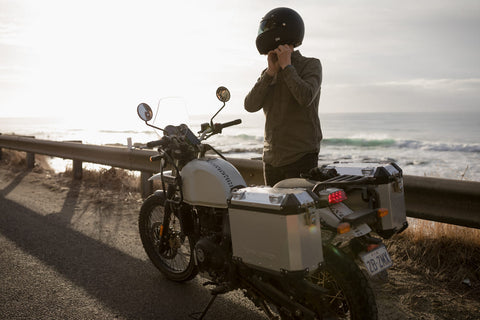
SOME EXTRA TIPS & THOUGHTS
-
TAKE NOTE OF THE BIKE'S MILEAGE
A bike's mileage will let you know not only how often it's been ridden, but how much life it probably has left. It varies a bit according to the model, so learn the life expectancy of the specific bike that you're shopping for.
Smaller motorcycles like sports bikes are considered to be high mileage at between 20,000 to 30,000 miles. Larger models like cruisers and touring bikes are deemed high mileage at around 50,000 miles.
Check out our article on motorcycle mileage for additional info.
-
KNOW HOW TO BARGAIN
If you've done any buying online you'll know that prices can often be negotiated, and motorcycles are no different. Unless the seller specifically states that the price is firm then you've got some room to bargain. The seller will most likely expect some haggling.
The trick is not to lowball the seller too much, or they'll think you're just wasting their time. Be bold but realistic. For example, if a bike is selling for $4,000, offer to pay something like $3,600 and they might counter-offer with around $3,800.
-
MEETING WITH THE SELLER
Always try to meet at the seller's home. Some people are understandably skittish about giving out their addresses online, but it lowers the probability of getting scammed if the meeting is at the seller's house.
Try to avoid organising a meetup where you'll be short on time. As you can see it takes a while to properly inspect a bike and give it a good test ride. You don't want to be rushing things because you or the seller need to be somewhere. Even if it means delaying the meet, give yourself plenty of time.
Also, remember to tell the seller not to start the bike before you get there. You want to see how the bike starts from cold so any mechanical issues can be detected. You can test whether it was starting by feeling if the exhaust pipes are warm. If they feel warm and the bike wasn't sitting in the sun, the seller might be trying to pull one over you.
Lastly, be on time. The seller is taking time out of their day as well, so be respectful of their schedule and things can start off on the right track.
-
THINK ABOUT INSURANCE
You should sort out motorcycle insurance before your new bike even hits the road. As soon as you become the legal owner, you also become liable for any damage or accidents the bike is involved with.
Insurance can be sorted over the phone, but some prior research will help avoid any nasty surprises. The cost of moto insurance can be affected by things like your riding experience, age, where you'll park the bike, and the amount of coverage that you'd like.
-
HAVE YOU GOT THE GEAR?
A helmet is the only piece of gear that a rider is legally required to wear, but the truth is you will need a bit more than that.
You're 35 times more likely to be involved in an accident on a motorcycle according to Motorbiscuit, so the gear that you wear matters. Just check out our crash stories if you need proof that motorcycle gear works.
Most riders wear motorcycle denim pants and a genuine riding jacket every time they ride. Normal denim and everyday clothes will be instantly ripped to shreds in the event of an accident, so don't make the mistake of thinking they will cut it.
You don't need to look like you've joined a riding gang every time you gear up. The current market for riding gear offers plenty of casual, flexible styles that look like everyday clothes. Check out our awesome range of motorcycle clothing to see what we mean.
